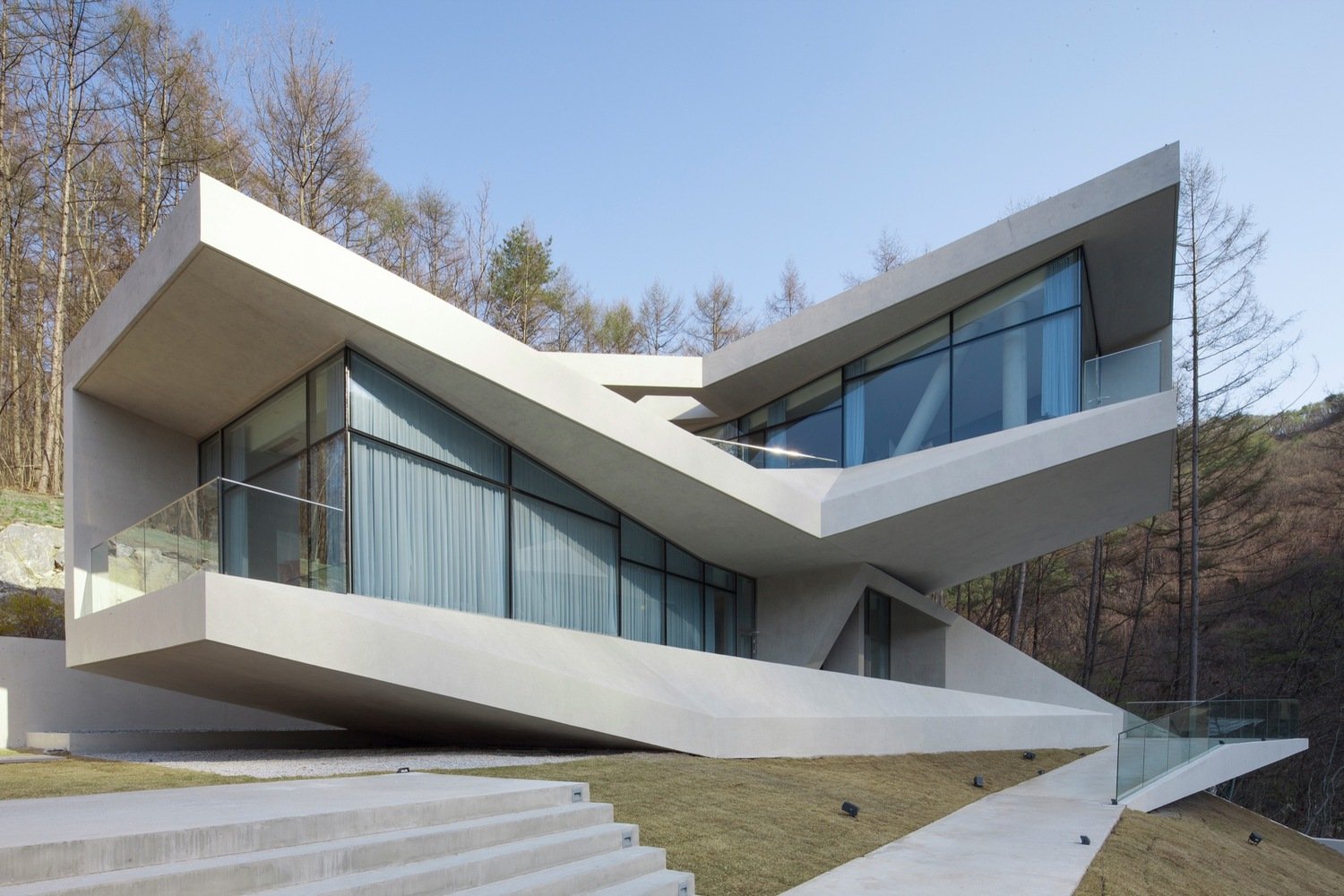#9006. Floating Façade: White Volumes and Panoramic Glazing in Mountain Minimalism
The presented residence exemplifies contemporary minimalist architecture where geometric expression becomes the main expressive medium. The building's façade is designed as a dynamic composition of several shifted white volumes that seem to hover above the slope. This angular construction with sharp lines and acute angles creates a dramatic contrast with the surrounding forest landscape.
Particularly noteworthy is the use of large glass surfaces that occupy a significant portion of the façade. The panoramic glazing with minimal profiles ensures visual lightness of the structure and maximizes the connection between interior space and nature. Light curtains behind the glass add a textural layer to the façade, softening its strict geometry.
The façade demonstrates characteristic features of deconstructivism with its deliberate violation of classical composition rules. Cantilevered extensions, asymmetrical arrangement of volumes, and sharp angles create a sense of dynamic equilibrium. The pure white color of the exterior emphasizes the sculptural quality of the form and enhances the play of light and shadow on the building's edges.
For private construction, several techniques can be borrowed from this project: contrasting combination of solid and glazed surfaces, use of cantilevered extensions to create dynamics, application of a minimalist color palette, and integration of architecture into the landscape. Even in a less radical execution, these techniques can give individuality and contemporary character to a residential house.
